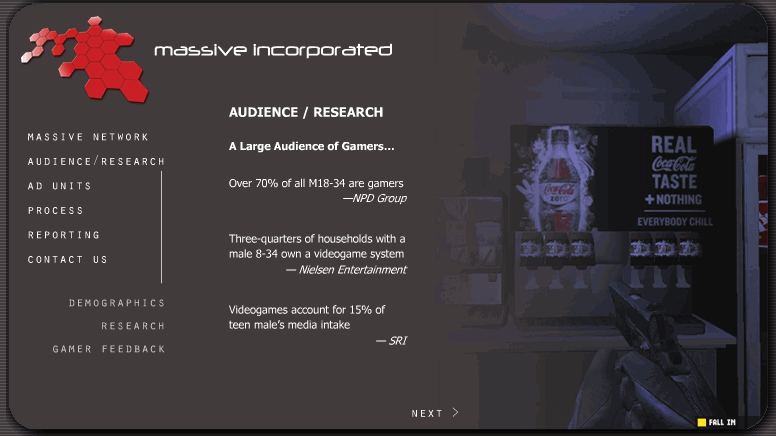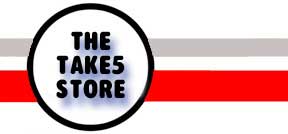What In-Game Advertising Should Be…Are You Listening Massive?
Forget the soft drink logos on vending machines in Splinter Cell: Chaos Theory or a cpg screen saver seen in SWAT 4, these are not the things that will benefit advertisers and for the most part all you do is piss off gamers.
One of the key proponents of in-game advertising, Massive, is plowing forward with their plan to slap as many logos inside game environments as fast as they can.

I don’t care that Massive cites a Harvard Business School study on its web site claiming that ‘90% of hard core gamers don’t mind advertising in their games’. Who did they poll? How many? On which platforms? Playing which games?
Gee, what happened to initial sales of Battlefield 2142 once EA announced that they would be implanting in-game advertising all over it (courtesy of Massive btw)? Sales stalled because game play was felt to have suffered and the ads were seen to be obtrusive and invasive. To be fair, an EA PR campaign quickly helped to counter many of these attitudes and the game has gone on to top 20 status as of May 2007 according to NPD but the ill feelings toward in-game advertising among a majority of gamers still exits.
It is interesting to note that a printed disclaimer provided with the BF 2142 game stated that the game will be monitoring “advertising data” to determine what ads are serviced to individual players.
What if you don’t want to become part of EA’s little lab experiment? The publisher recommends you “do not install or play the software on any platform that is used to connect to the Internet.” Kind of defeats the purpose of playing Battlefield 2124 as an online MMO in the first place doesn’t it?
The Australian version of 2142 however lacks the ‘Dynamic Advertising feature‘ as it was believed to be illegal under the Australian Spyware Act. Lucky mates.
So where does this leave us? At a point of a huge opportunity (Long Tail anyone?).
What gamers DO like is the opportunity to be a part of something few others are aware of or know about which is why beta tests of games are highly sought after and fill up insanely fast. Also, the appearance of easter eggs in games helps prove that some non-endemic elements CAN be introduced in-game under the right circumstances. I think that gamers wouldn’t mind ads so much as they contributed to the overall feel of the game environment and helped deepen the experience.
Which lead me to develop the idea for virtual products being promoted in-game which would be exclusive to the game environment being played but which could also be purchased as real products for offline consumption in the real world (and not jerking around with some avatar in Second Life pretending to consumer some virtual beverage for example.)
Here’s an example:
Day of Defeat Source is a great online only FPS designed around WW2 themes. How cool would it be to be able to purchase K-rations that were actually made by Powerbar and purchaseable through the Steam network for delivery to your home? Packaging and branding would all be made to resemble the in-game experience so gamers who enjoy that particular genre (DoD Source WW2 action) would conceivably be more attuned to drawing affinity toward the brands and also actually buying them! (Go figure…real sales!).
The reason I chose DoD Source for this example is that as an older game it still is running strong as an online community, it tends to draw older gamers with more disposable income, and the platform for selling the products already exists via Valve’s proven Steam network.
I will venture to state here that overall Powerbar sales could receive a brand lift from such a halo experience (no pun intended, fellow gamers).
So, you heard about the idea here first. Anyone want to help propel it into reality?





